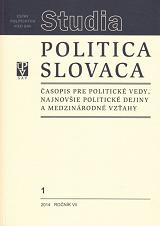Montenegro’s Gulf of Kotor as a historical border region: Political rivalry, cultural competition, and local co-existence in a long-term perspective
Montenegro’s Gulf of Kotor as a historical border region: Political rivalry, cultural competition, and local co-existence in a long-term perspective
Author(s): Pieter Duin, van, Zuzana PoláčkováSubject(s): Politics / Political Sciences
Published by: SAV - Slovenská akadémia vied - Ústav politických vied Slovenskej akadémie vied
Keywords: Gulf of Kotor; longue durée history; border regions; cultural competition; religious identity; political rivalry
Summary/Abstract: This essay argues that Boka Kotorska, Montenegro’s Gulf of Kotor region, can be conceptualised as a political, cultural, and religious border region where ‘East’ and ‘West’, the Orthodox and Catholic worlds, encountered each other and overlapped over a long period of time. There were various political and economic actors involved in this historical process of rivalry and co-existence, including Byzantium, Venice, Serbia, the Ottoman Empire, and Montenegro and its predecessors Duklja and Zeta. The Gulf of Kotor became a region where a large number of Catholic and Italian-influenced settlements sprung up, although the Orthodox population appears to have constituted a majority of the population even in Venetian and Austrian-controlled territory between the Late Middle Ages and the early twentieth century. Patterns of co-existence in the town of Kotor and elsewhere did not prevent the emergence of religious and political conflict on many occasions. But these contradictory aspects of rivalry and co-existence balanced each other during most of the long period that the Gulf of Kotor region had a certain political, economic, and cultural importance. This may contribute to our understanding of the dynamics of larger and smaller European border regions and of European history as a whole. In a micro-region like Boka Kotorska destructive confrontation and constructive interpenetration can be observed as a long-term process.
Journal: Studia Politica Slovaca
- Issue Year: VII/2014
- Issue No: 1
- Page Range: 21-42
- Page Count: 21
- Language: English

